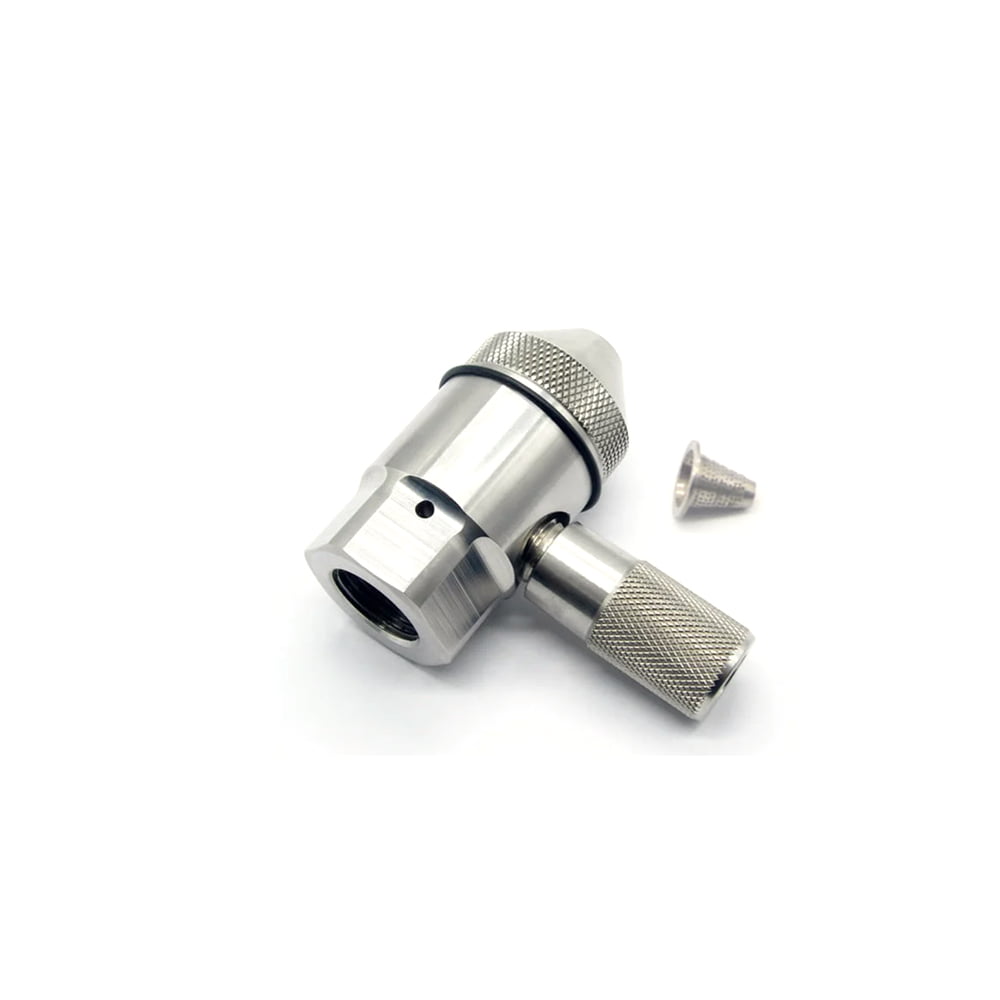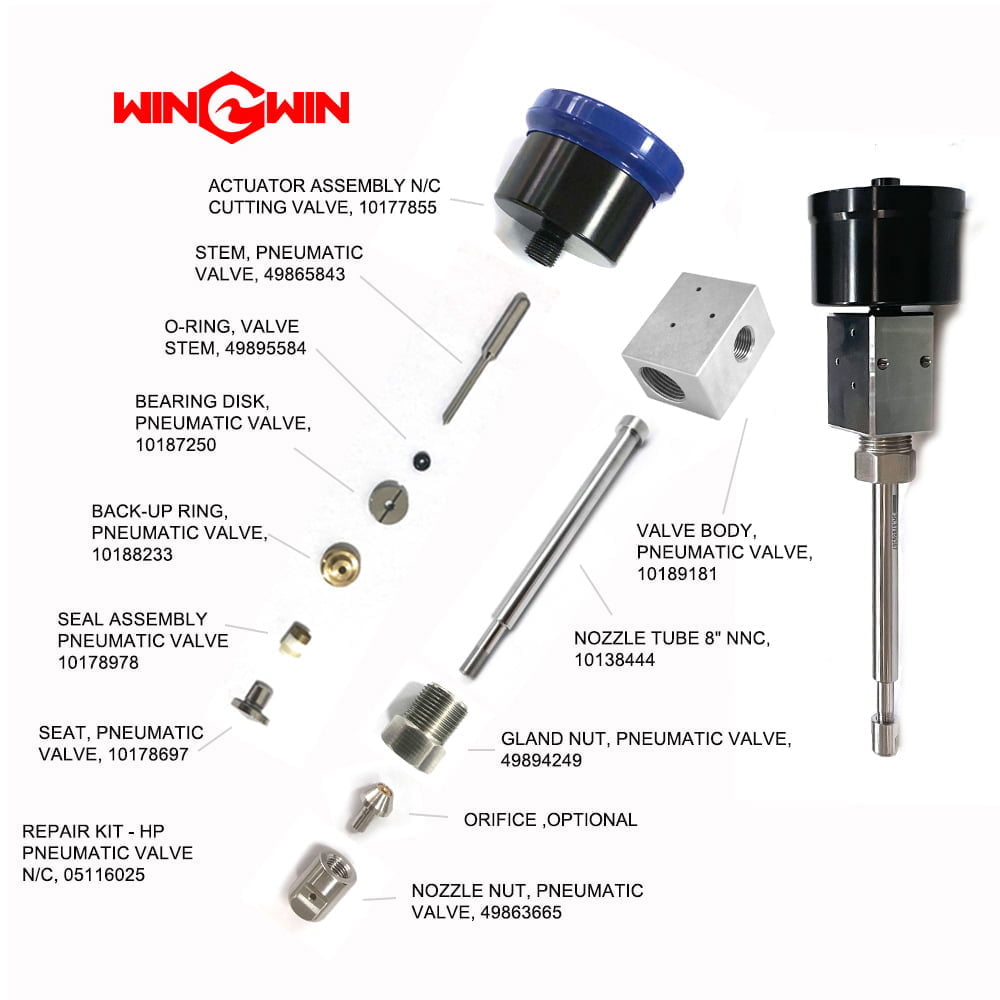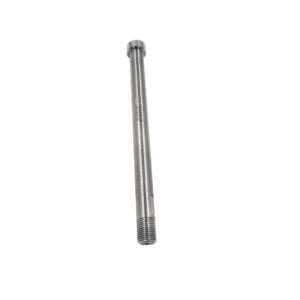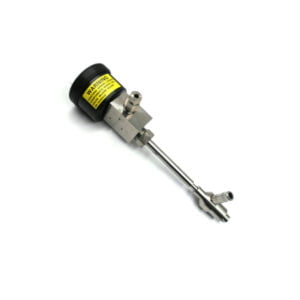Описание
Achieving High-Quality Waterjet Cut: Factors and Tips
Waterjet cutting is a popular method for cutting a wide range of materials in various industries.
It is a highly precise cutting process that can produce intricate and complex shapes with minimal material waste.
The precision of the cut holds immense significance in determining the efficacy of the production process.
Any compromise on the quality of the cut can have a detrimental effect on the overall outcome.
Next, we will discuss the importance of waterjet cut quality and the factors that can affect it, as well as provide tips for achieving the best possible cut.

| Описание | Часть No. |
| Сборка IDE II | |
4 100 бар | |
| Diamond Orifice & Short Stop Filter | |
00,007 дюйма / 0,17 мм | 20477950007 |
00,008 дюйма / 0,20 мм | 20477950008 |
00,009 дюйма / 0,23 мм | 20477950009 |
00,010 дюйма / 0,25 мм | 20477950010 |
00,011 дюйма / 0,28 мм | 20477950011 |
00,012 дюйма / 0,30 мм | 20477950012 |
| 00,013 дюйма / 0,33 мм | 20477950013 |
00,014 дюйма / 0,35 мм | 20477950014 |
| 00,016 дюйма / 0,40 мм | 20477950016 |
| 00,018 дюйма / 0,46 мм | 20477950018 |
Is it Possible to Mix and Match Different Edge Qualities in Waterjet Cutting?
Waterjet cutting offers the possibility of mixing and matching different edge qualities in a single part.
This can be accomplished by manipulating the cutting speed of the waterjet machine to produce distinct edge qualities in different regions of the component.
Mixing different edge qualities can be particularly useful when cutting parts with both internal and external areas.
For example, internal areas that are not visible or do not require a high level of finish quality can be cut at a lower edge quality, while the external, more prominent areas can be cut at a higher edge quality, such as Q4 or Q5.
By mixing and matching different edge qualities, you can achieve the desired level of precision and finish quality for each area of the part, while still maintaining a high level of efficiency and productivity.
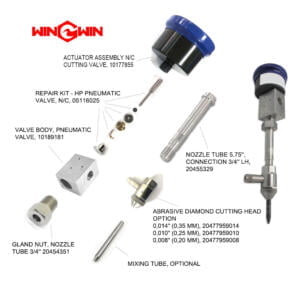
What are the Factors that Can Affect the Edge Quality in Waterjet Cutting?
Several factors can affect the edge quality in waterjet cutting, including cutting speed, abrasive mixing tube length, waterjet stream diameter, and nozzle height.
– The cutting velocity is a crucial factor that significantly impacts the quality of the resulting edge.
Achieving a high-quality edge is heavily reliant on optimizing the cutting speed parameter.
Lower cutting speeds typically produce better edge quality, although extremely low cutting speeds can lead to an increased kerf angle.
– The length of the abrasive mixing tube plays a vital role in determining the quality of the resulting edge.
Longer mixing tubes have the ability to create a more consistent abrasive mixture, which in turn leads to a higher quality edge.
On the other hand, shorter mixing tubes can negatively impact edge quality.
– The diameter of the waterjet stream also plays a significant role in achieving high-quality edge in waterjet cutting.
A smaller stream diameter generally results in higher-quality cuts, but it may come at the cost of reduced cutting speed.
– The size of the nozzle, which directly influences the diameter of the waterjet stream, is an essential factor to take into account when striving for optimal results.
– The nozzle height can impact the edge quality in waterjet cutting.
Excessive nozzle height during waterjet cutting can cause a rounding effect on the top edge of the cut, as well as lead to an increase in the kerf angle.
Lower nozzle heights typically produce the best-quality cuts.
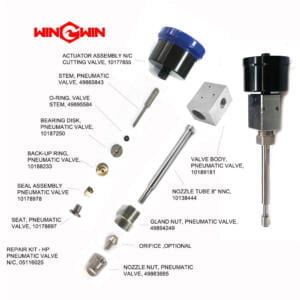
How Does the Material of the Workpiece Affect the Quality of the Cut in Waterjet Cutting?
It is crucial to consider the properties of the workpiece material to achieve optimal cutting results.
Specifically, the machinability of the material can influence the finish quality of the cut.
Materials that are difficult to machine can lead to surface imperfections such as striations or rough edges, even when utilizing Q5 cut settings.
Hence, it is essential to take into account the machinability of the material to ensure that the cutting process results in the desired quality.
In such cases, additional precautions may be necessary to achieve the desired edge quality, based on the type of material being cut.
It is worth noting that materials with excellent machinability can yield remarkable edge quality, which may not necessarily require higher cut settings like Q5.
The smoother surface of such materials allows for more precise cuts and finer details.
How Does the Edge Quality Differ for Thin, Thick, or Stacked Parts in Waterjet Cutting?
The thickness of the material being cut is a crucial factor that can impact the quality of the edge in waterjet cutting.
Generally, thinner materials tend to have better edge quality even at higher cutting speeds, as there are fewer opportunities for layered striations to form.
In contrast, thicker materials have a greater potential for striations, which can negatively impact the edge quality.
The best results for edge quality are typically achieved by decreasing the cutting speed when working with thicker materials.
The aforementioned principle also holds true for stacked parts.
When cutting through multiple layers, the lower layers may experience a slightly diminished cut quality in comparison to the upper layers.
This is because the waterjet stream may have already lost some of its energy by the time it reaches the lower layers.
How Does the Use of Abrasive Affect the Quality of the Cut in Waterjet Cutting?
The use of abrasive can have an impact on the quality of the cut in waterjet cutting.
Abrasive waterjet cutting is typically used for harder materials and can provide better quality results compared to pure waterjet cutting.
The abrasive material plays a vital role in the cutting process by eroding the workpiece material, thereby facilitating a smoother and more accurate cut.
This is particularly important for harder materials that are difficult to cut using pure waterjet cutting.
On the other hand, pure waterjet cutting is typically used for softer materials like rubber and paper.
This is because pure waterjet cutting produces a smaller kerf width, which can lead tobetter edge quality in these materials.
What Tips Can Help Achieve the Best Possible Cut Quality in Waterjet Cutting?
To achieve the best possible cut quality in waterjet cutting, operators should keep in mind several tips:
1. Use the right software
The quality of the cut can be heavily influenced by the software employed to program the waterjet machine.
Make sure to use a software program that is designed specifically for waterjet cutting, and that is capable of handling the complexity of the job.
2. Calibrate the machine properly
Proper calibration of the waterjet machine is crucial to achieving high-quality cuts.
Make sure to follow the manufacturer’s recommended calibration procedures and to perform regular maintenance checks.
3. Choose the right garnet
The type and quality of the garnet used in waterjet cutting can have a significant impact on the quality of the cut.
Choose a garnet that is designed specifically for waterjet cutting, and that is appropriate for the type of material being cut.
4. Use the recommended water pressure
Water pressure is an important factor in achieving high-quality cuts.
Adhering to the recommended water pressure for the material type is essential to achieve the desired quality of the cut.
5. Perform regular maintenance
Regular maintenance checks can help ensure that the waterjet machine is operating at optimal performance, which can help to achieve high-quality cuts.
6. Perform test cuts
Before cutting the actual parts, perform test cuts on similar materials to determine the optimal cutting parameters and to ensure that the machine is operating at optimal performance.
Любые другие требования к waterjet cutting, добро пожаловать в Проконсультируйтесь с нами.

